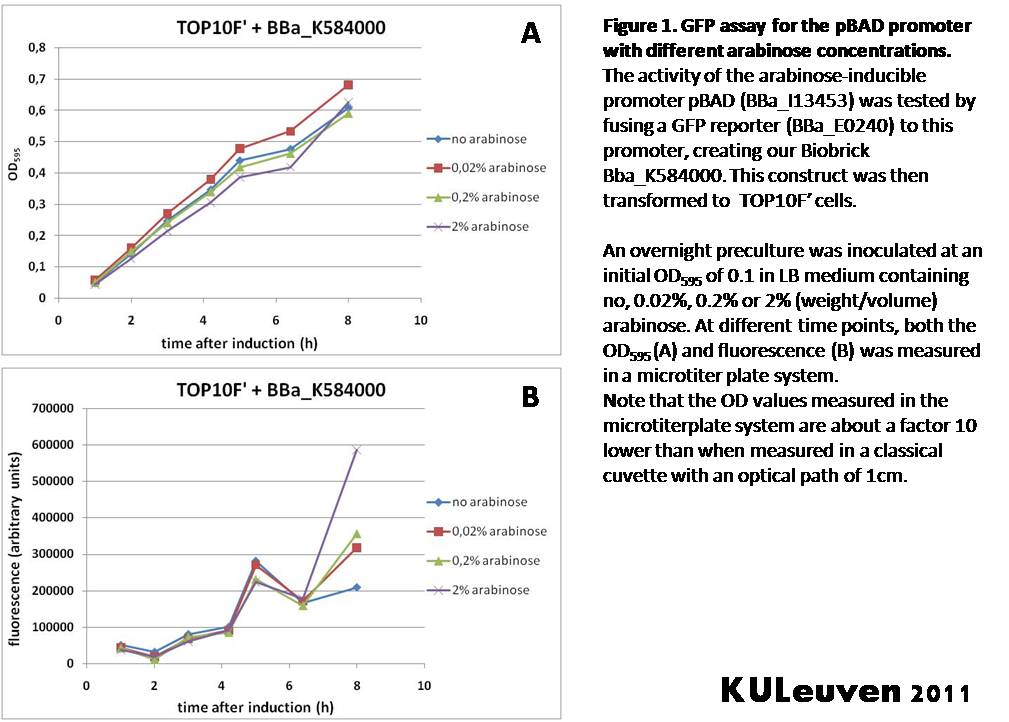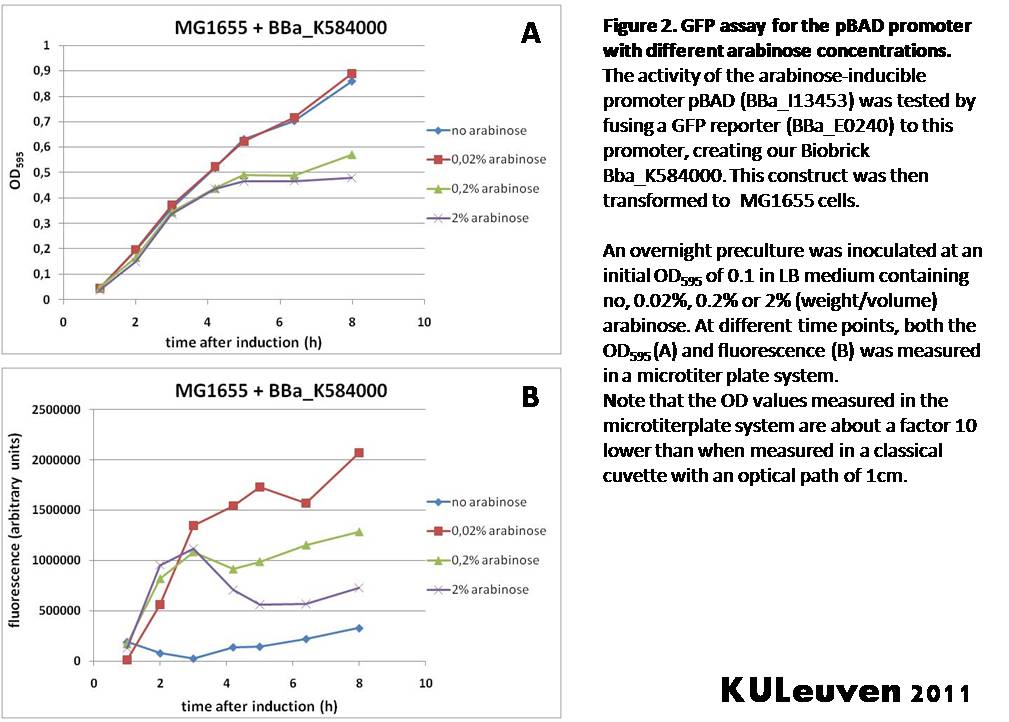Difference between revisions of "Part:BBa K584000:Experience"
(→User Reviews) |
|||
| Line 1: | Line 1: | ||
| − | |||
__NOTOC__ | __NOTOC__ | ||
This experience page is provided so that any user may enter their experience using this part.<BR>Please enter | This experience page is provided so that any user may enter their experience using this part.<BR>Please enter | ||
| Line 8: | Line 7: | ||
===User Reviews=== | ===User Reviews=== | ||
<!-- DON'T DELETE --><partinfo>BBa_K584000 StartReviews</partinfo> | <!-- DON'T DELETE --><partinfo>BBa_K584000 StartReviews</partinfo> | ||
| − | + | ||
{|width='80%' style='border:1px solid gray' | {|width='80%' style='border:1px solid gray' | ||
|- | |- | ||
|width='10%'| | |width='10%'| | ||
| − | <partinfo> | + | |
| − | <I> | + | <partinfo>BBa_K584001 AddReview 5</partinfo> |
| + | <I><B>K.U.Leuven iGEM 2011 Team</B></I> | ||
|width='60%' valign='top'| | |width='60%' valign='top'| | ||
| − | + | ||
| + | <u><b>Characterization</b></u> | ||
| + | <p align="justify">To test the usefulness of the arabinose-inducible promoter I13453 in our 2011 iGEM project, we fused the promoter to a GFP reporter, and assayed the promoter’s activity after addition of different amounts of arabinose. We tested this activity both in a TOP10F’ (Figure 1) as well as a MG1655 (Figure 2) E.coli strain background. For more information on E.coli strain descriptions, we recommend the following web site: [http://openwetware.org/wiki/E._coli_genotypes E.Coli_Genotypes].</p> | ||
| + | |||
| + | [[Image:pBAD_TOP10.jpg|thumb|center|Figure1]] | ||
| + | |||
| + | |||
| + | <p align="justify">As can be seen in Figure 1, addition of arabinose had only minor, if any, effect on the growth of TOP10F’ cells, most likely because these cells cannot metabolize the sugar. However, to our surprise, we did not observe an arabinose-induced increase of fluorescence compared to the control without arabinose for the first 6 hours. The observed increase in fluorescence after arabinose addition at the 8 hour time point could not be confirmed when the experiment was repeated.</p> | ||
| + | |||
| + | [[Image:pBAD_MG1655.jpg|thumb|center|Figure2]] | ||
| + | |||
| + | |||
| + | <p align="justify">Figure 2 demonstrates that in MG1655 cells, the addition of 0.2% and 2% arabinose results in a growth defect after about 4 hours of growth, which may relate to the metabolism of the sugar in this strain. In contrast to the TOP10F’ cells, we see a clear induction of promoter activity after addition of arabinose. The addition of only 0.02% resulted in the greatest induction. Increasing arabinose concentration did not increase fluorescence, probably due to the observed growth defect. </p> | ||
| + | |||
| + | |||
| + | <p align="justify">As an additional control, we checked the activity of a constitutive promoter under the same conditions as described here. For results on these experiments, check out our [https://parts.igem.org/wiki/index.php?title=Part:BBa_K584001 BBa_K584001] page.</p> | ||
| + | |||
|}; | |}; | ||
| − | |||
| − | |||
Revision as of 08:18, 21 September 2011
This experience page is provided so that any user may enter their experience using this part.
Please enter
how you used this part and how it worked out.
Applications of BBa_K584000
User Reviews
UNIQ553062c0a34e5258-partinfo-00000000-QINU
|
•••••
K.U.Leuven iGEM 2011 Team |
Characterization To test the usefulness of the arabinose-inducible promoter I13453 in our 2011 iGEM project, we fused the promoter to a GFP reporter, and assayed the promoter’s activity after addition of different amounts of arabinose. We tested this activity both in a TOP10F’ (Figure 1) as well as a MG1655 (Figure 2) E.coli strain background. For more information on E.coli strain descriptions, we recommend the following web site: [http://openwetware.org/wiki/E._coli_genotypes E.Coli_Genotypes].
As can be seen in Figure 1, addition of arabinose had only minor, if any, effect on the growth of TOP10F’ cells, most likely because these cells cannot metabolize the sugar. However, to our surprise, we did not observe an arabinose-induced increase of fluorescence compared to the control without arabinose for the first 6 hours. The observed increase in fluorescence after arabinose addition at the 8 hour time point could not be confirmed when the experiment was repeated.
Figure 2 demonstrates that in MG1655 cells, the addition of 0.2% and 2% arabinose results in a growth defect after about 4 hours of growth, which may relate to the metabolism of the sugar in this strain. In contrast to the TOP10F’ cells, we see a clear induction of promoter activity after addition of arabinose. The addition of only 0.02% resulted in the greatest induction. Increasing arabinose concentration did not increase fluorescence, probably due to the observed growth defect.
As an additional control, we checked the activity of a constitutive promoter under the same conditions as described here. For results on these experiments, check out our BBa_K584001 page. |


